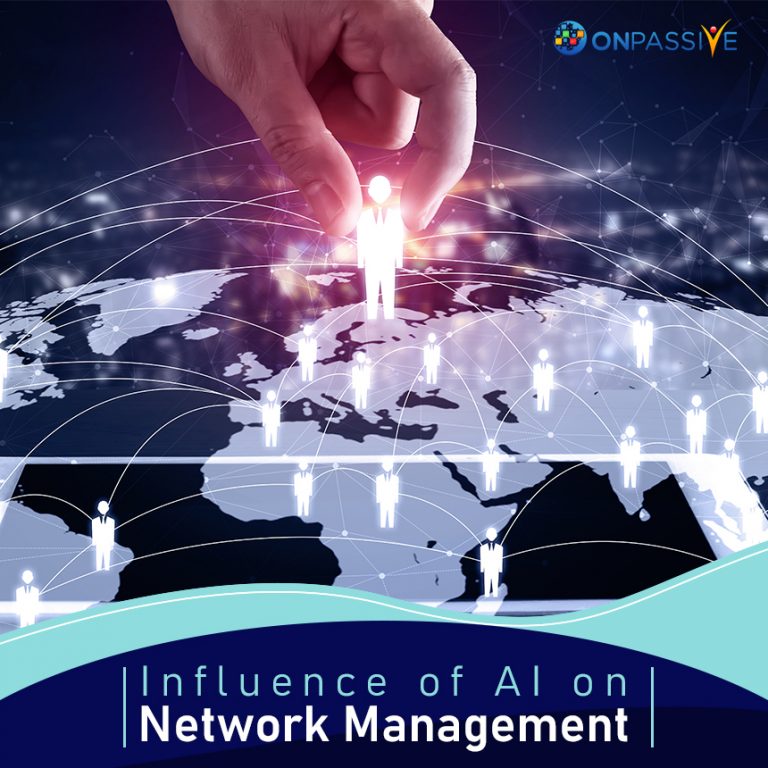
Can you imagine a vast network that can make automated decisions based on your preferences and activity, effortlessly switching you to the best possible network without interrupting your experience? Sounds good, right?
Picturing this scenario in action, we would no longer have to decide whether we’d be using WiFi, Fibernet, Bluetooth, a mobile network, or any IoT network technologies. The requirements of network technology today vary drastically than what it was just a few months ago. Along with the digital transformation, your network must evolve to meet today’s growing demands and tomorrows.
Artificial Intelligence Changing the Game of Networking
One significant advancement that improving networks with AI brings to the table is that Artificial Intelligence will facilitate the facilitation of real-time conversations flowing between two or more networks. This ensures each network receives the optimum service quality, and AI will demonstrate these interactions across multiple industries and borders.
The integration of networks, AI, and machine learning is almost the same as IoT. Like IoT handles all connected devices with the internet’s help, Artificial Intelligence and networks work the same way in handling the entire interactions. AI and machine learning are responsible for facilitating the information by automatically connecting, routing, and adding networks with one work without any interruptions. Improving networks with AI helps minimize the network’s workload as it computes and analyzes data faster than humans.
Below are the ways in which improving networks with AI and machine learning impact the networks and enable businesses to streamline their network management efforts.
#1 Amalgamation of Human Intelligence and AI
With AI and machine learning, we can have a whole new approach to networking. Although Artificial Intelligence will handle much of the data centers and humans’, necessity would be prevailed to make informed decisions. Improving networks with AI and machine learning can create faster and more efficient networks than existing ones. However, while improving networks with AI, the actual design and infrastructure would still require human intelligence.
#2 Resolving Network Issues via Metrics
Traditional network systems depend upon deep-packet inspection (DPI) to verify individuals’ networks and collect detailed information to identify and fix network issues. Doing so would not only require more time, but it also can render insufficient information at times. With the limited access to users’ data, these technologies cannot identify network issues. Improving networks with AI and its power of machine learning applications can be trained to find the network issues and provide the necessary solution up to 80 percent accuracy.
#3 Data Analysis for Enhanced Security
Identifying malware would become incredibly tricky without decrypting the information since users’ data is in encrypted form. Artificial Intelligence, with the capabilities of machine learning, crawl thorough vast encrypted data to identify unusual traffic patterns and alert the experts or help them find an easy way to tackle the attacks made on their networks.
#4 Dynamic Routing of Traffic
With the help of software-defined networking technologies, it is easy to automatically and dynamically switch traffic between the internet and private network, which boosts improving networks with AI. This ensures smooth and super-fast access to applications for employees to collaborate by improving networks with AI with more security, no matter where they are around the world. The combination of AI-driven network topologies and AI-powered software-defined networking brings us closer to the profound evolution of network and its innumerable capabilities of improving networks with AI across all industries.
#5 Revolutionizing the World’s Network
The integration of AI with networks provides us an excellent opportunity to transform the world’s networks. This is especially important when improving networks with AI, due to things like IoT-enabled autonomous vehicles and always-connected smart city systems, we are at the turning point where the way we use networks is about to transform forever. Artificial Intelligence is disrupting and will continue to do so in the long run. A total transformation of current business models encourages the best possible user experience in the most cost-effective way possible by improving networks with AI.
The Future of Network with AI and Machine Learning
Networks need to maximize consumer service to achieve a competitive advantage. By scouring vast volumes of consumer data regularly, improving networks with AI can obtain vital knowledge required to manage a tremendous amount of network and its issues, if any. Also, improving networks with AI does not hinder the network’s capacity to better customer experience.
All these factors stress on networks to focus on efficiency, bandwidth, control, and security. Without incorporating Artificial Intelligence and its Machine Learning behavior, none of this is feasible. AI multiples the powerful networking capabilities by accelerating the process from connecting and routing to fixing significant issues that are too complicated for a human to handle.


